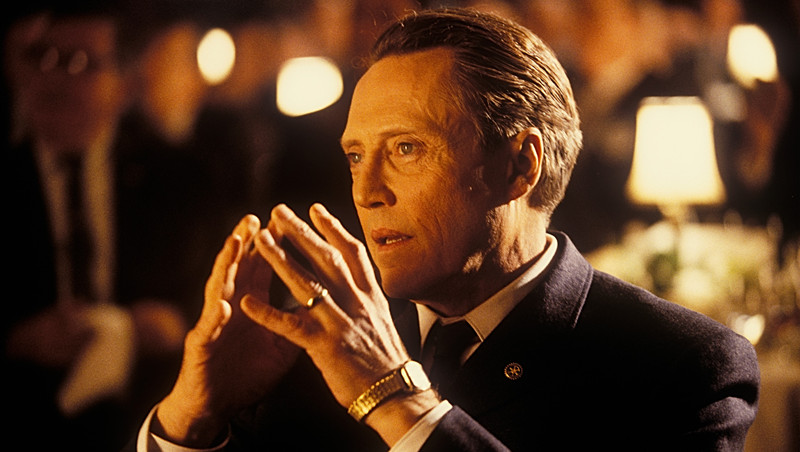
The 1990s was a golden age for crime movies. Every single year of the decade, yet another perfect neo-noir was released. Audiences were overrun with classics like Goodfellas, Pulp Fiction and Fargo. Although Quentin Tarantino remains the undefeated champion of the genre during this decade, his work is only the tip of the iceberg.
When great ‘90s crime films were not sufficiently promoted or backed by a production company with enough exposure, they sadly fell into or off the margins of cinema history. Nevertheless, these titles easily give Scorsese and the Coen brothers a run for their money. The best ones are just as entertaining now as they were in the ‘90s, surpassing all that’s exciting about the genre. Crime addicts are guaranteed a bounty of undiscovered classics from this decade.
1. The Hand That Rocks the Cradle (Curtis Hanson, 1992)
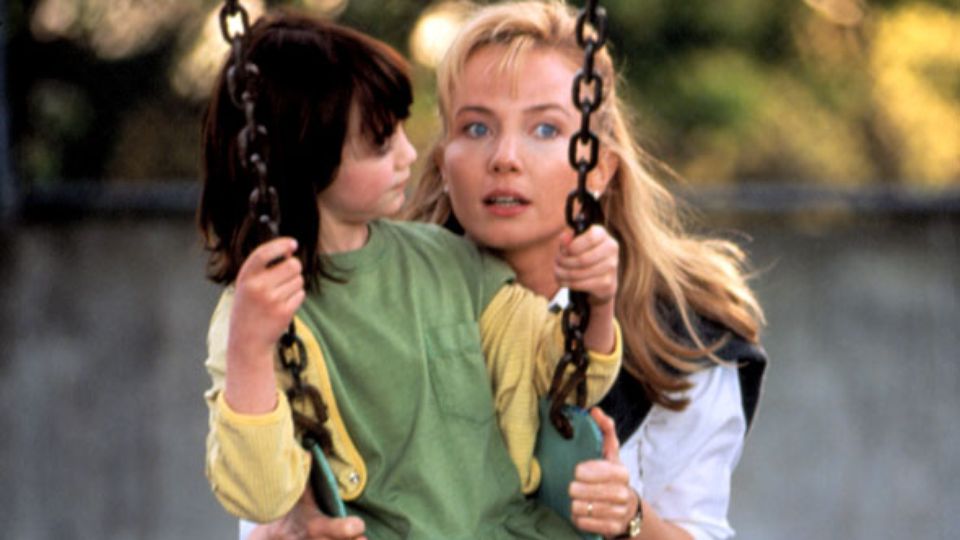
In Seattle, ‘Peyton’ (Rebecca De Mornay) is hired as a nanny by Claire (Annabella Sciorra) and Michael Bartel (Matt McCoy). They’re a couple with a daughter, Emma (Madeline Zima), and another child on the way. They have no clue that Peyton is actually there to exact revenge on Claire for what she did to her family. The film is the epitome of the ‘yuppies in peril’ sub-genre of psychological thrillers, in the vein of Fatal Attraction (1987).
What makes this movie so harrowing is the realism of its premise and plot. Audiences are conflicted between sympathising with Claire or Peyton, calling into question who is the true ‘villain’ of the piece. It invokes an assessment of how we favour or dislike others, based upon the deception of appearances. The writing pierces directly into the veins of sexual politics, racial tension, grudges and female rivalry, unmasking an animalistic savagery in civilised suburbia. Much like David Lynch’s films, Robert Elswit’s camerawork captures the idyl of the Bartel’s home with the unnerving suspense of a wolf’s stare. The Hand That Rocks the Cradle will constrict a fist around your blood vessels and not relinquish them until the closing credits.
Ghostbusters’ Ernie Hudson commits the finest performance of his career, as the kindly repairman Solomon, showing us the spirituality and vulnerability in his mastery of the acting craft. While De Mornay and Sciorra are accomplished leading ladies, an early role from Julianne Moore as the silver-tongued Marlene proves to be another of the film’s qualities. Satisfying all the entertainment value of a slasher and romantic drama, The Hand That Rocks the Cradle extracts the horror of movie fantasy and thrusts it into the domesticity of our own homes. It is still waiting to be celebrated as the nail-biting, Hitchockian triller it is.
2. Sonatine (Takeshi Kitano, 1993)
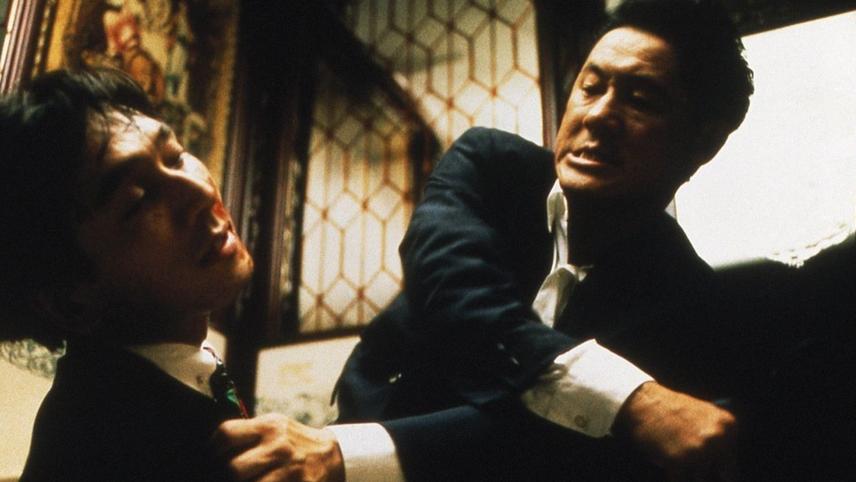
The film opens with a blue fish on a spear against a red sunset. Murakawa (Takeshi Kitano) is sent by his Tokyo yakuza boss to the island of Okinawa to assuage the in-fighting between rival yakuza clans. As the warfare escalates, Murakawa and his soldiers retreat to the beach. Here, the story blossoms into an existential, haiku-like, tragic-comic meditation on the beauty of life and death.
Sonatine is undoubtedly standup comedian turned neo-noir auteur ‘Beat’ Takeshi Kitano’s “lost masterpiece,” echoing the mien of Jean-Pierre Melville’s Le Samouraï. Amongst other themes, it examines guilt and the consequences of blind conformity, exuding an atmosphere pertaining to the perceived nihilism and banality of life and death. Kitano’s still, Zen tone makes for a philosophical, meditative yakuza legend with a poet’s heart. As well as surprisingly showing us the yakuza in their introspective down-time, such as when they sit listening to the rain, in juxtaposition to their barbarity, Kitano also paints them with humour. This is typified when the oyabun (godfather) is eating, whilst all his henchman sit in silence. Looking up, he permits them to “smoke.” Synchronously, all the mobsters take out their cigarette packets and light-up.
What further differentiates Sonatine from the majority of crime films is the novel way Kitano and DP Katsumi Yanagishima choose to depict violence. Instead of showing us a shootout itself, the scene is captured from outside, displaying the muzzle flashes through an upstairs window. Then, it cuts to a shot of the muzzle flashes reflected on the waxed roofs of cars. Kitano utilises the crime genre as a crucible for his artistic priorities: sociological reflection, philosophical contemplation, yūgen and the poetry in the mundanity of life. The film’s extended takes and painterly compositions aids in the expression of this Buddhistic tone. Next to Pulp Fiction and Goodfellas, Sonatine is the greatest crime film of the ‘90s.
3. Red Rock West (John Dahl, 1993)
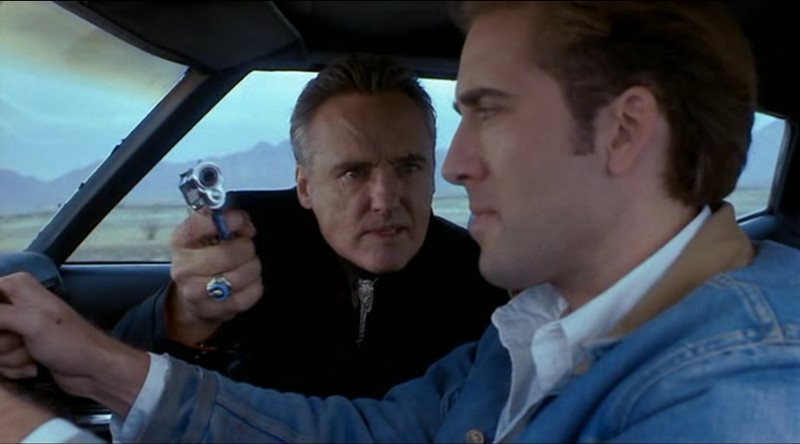
Michael (Nicolas Cage) is looking for work in Arizona. He’s mistaken for a hitman and employed to kill a woman named Suzanne (Lara Flynn Boyle). When Lyle from Dallas (Dennis Hopper) turns-up, the real hitman, he and the local barman (J.T. Walsh) hunt-down Michael.
Before Tarantino had made his first film, John Dahl had already perfected his own hardboiled universe in Kill Me Again (1989). Dahl expands his cool style in Red Rock West: a mystery with so many unforeseen twists, the audience remains perpetually aghast, as more puzzle pieces are revealed. The script is fast-paced, action-packed, intellectual and concise. In parallel to his work in Blue Velvet, Easy Rider’s Dennis Hopper is bestial and terrifying as Lyle. Dahl collages his unique Americana style through his mise-en-scène: desert landscapes, neon Budweiser signs, taxidermy-adorned cabins, ‘Canadian tuxedoes,’ tenebrous lighting. Dahl hasn’t directed a feature since 2007, instead focusing on guest directing TV series. It’s a great shame the crime genre lost an auteur this talented and individual.
In addition to an excellent, unsung lead performance by Nicholas Cage, the late character actor J.T. Walsh is commanding in his chilling, slippery role, much like his work in The Negotiator (1998) with Samuel L. Jackson. Critic Andrew Johnson wrote of Walsh: “[His] characters were often self-important authority figures, ‘defending’ the American establishment from the individualism represented by the movies’ heroes… or crooks who thrived by exploiting the hypocrisy of the system. Walsh didn’t just make a career of playing bad guys – his performances offered a sort of running commentary on the power structure of American society.” Walsh’s untimely death in 1998 left a satirical and critical hole in the acting craft, one which may never again be filled.
4. Suture (Scott McGehee & David Siegel, 1993)
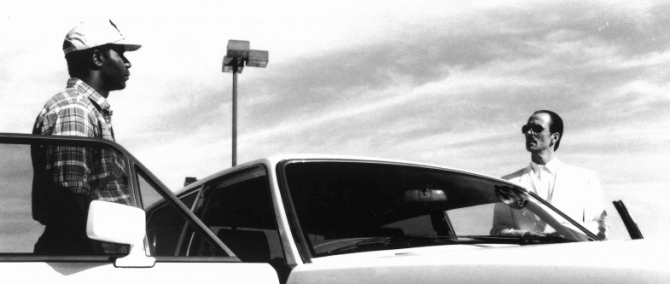
After committing murder, Vincent Towers (Michael Harris) fakes his own death to escape the law. He switches places with his half-brother, Clay Arlington (Dennis Haysbert), but later tries to kill him.
Taking inspiration from Hiroshi Teshigahara’s The Face of Another (1966), directors Scott McGehee and David Siegel endeavoured to make a movie in the style of the early-‘60s. Indeed, shot in black and white, Suture attains the mysterious, hallucinogenic, glamorous look of that period. Aesthetically, it stands-out for its unique, minimalist framing and artistic sensibilities when capturing action. Furthermore, it feels like a lost Hitchcock thriller, for the intensity of its suspense and Vertigo-esque storyline.
Violence or a life-changing plot twist feel imminent at any time, leaving the audience in a wild desert of menace throughout the film’s duration. Sab Shimono as Dr. Max Shinoda aids in the invocation of its haze and slyness. After premiering at the Telluride Film Festival and being screened in ‘Un Certain Regard’ at the 1994 Cannes film festival, the beguiling, esoteric jewel that is Suture fell into relative obscurity. It’s a work of such high filmmaking quality, it demands a long-overdue reappraisal from crime devotees.
5. Hard Eight (Paul Thomas Anderson, 1996)
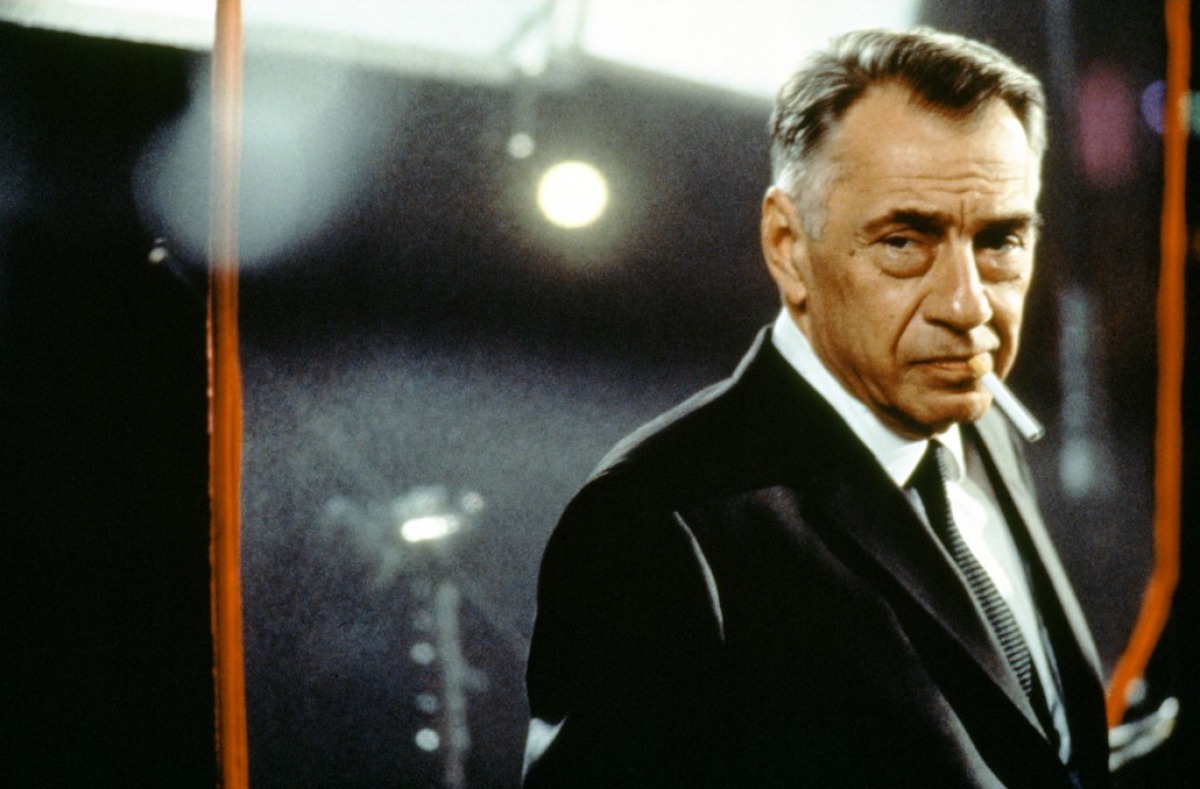
Paul Thomas Anderson’s debut feature tells the story of old timer Sydney (Philip Baker Hall), who makes John (John C. Reilly) his gambling protégé in Reno, Nevada. However, when John gets friendly with Clementine (Gwyneth Paltrow) and Jimmy (Samuel L. Jackson), things start going badly wrong.
Not only is Hard Eight a perfect neo-noir, it is also one of P.T. Anderson’s best pieces. Its simple, focused story, with few characters and underplayed tone, rewards audiences with an atmospheric, character-driven gangster piece. Its pace and cinematography are as dreamy as its vibes score and flashing red casino lights. The screenplay scrutinises regret, fatherhood and Anderson’s recurrent theme of surrogate families. Anderson is a writer-director of such aptitude, even his first feature is accomplished as any of his others. The brooding Hard Eight is both the most-underrated and one of the best crime movies of the ‘90s.
With the Hollywood mythology that’s grown around her, audiences often forget what a great actor Gwyneth Paltrow is. Her character work in Hard Eight is studiously crafted, illustrating her quirky character. As usual, Samuel L. Jackson brings a Shakespearian cadence and timbre to his character, endowing Jimmy with the gravitas of Hamlet or King Lear. Jackson also has the ability to be funny and terrifying at the same time – his knack for entertainment making him a one-man carnival. This is not to mention the majestic leads in Hall and Reilly. Crime cinema does not get much better than Hard Eight.